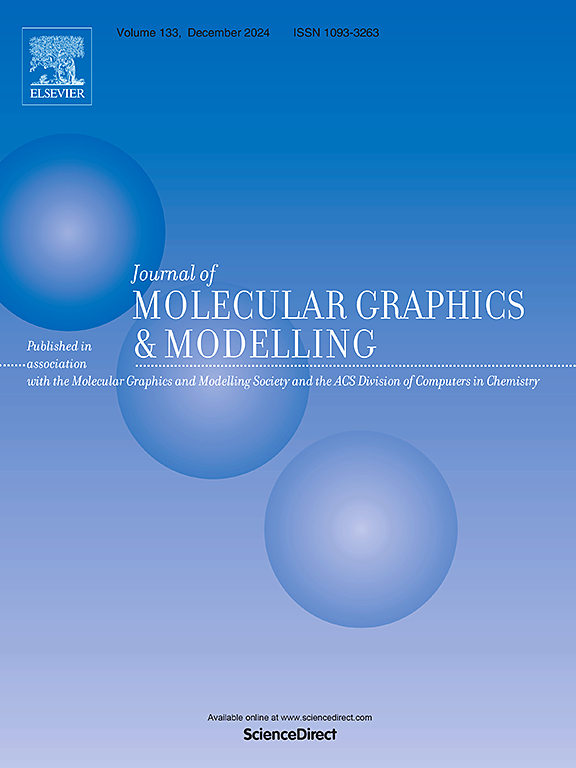Tailoring functionalized 2,3-diaza-1,3-butadienes for high-energy and insensitive applications
IF 2.7
4区 生物学
Q2 BIOCHEMICAL RESEARCH METHODS
引用次数: 0
Abstract
The heat of formation (HOF), detonation performance, electronic properties, thermal stability, impact energy and explosive power of a series of highly functionalized 2,3-diaza-1,3-butadienes were studied using density functional theory. HOF values of all the designed compounds were positive. Among the 100 compounds, more than 50 % exhibited a density equal to or greater than 1.9 g cm-3. There was close agreement in the calculated value of density, detonation performance and impact energy of traditional explosive RDX, HMX and CL-20 with the experimental value. The predicted values of detonation velocity and pressure indicated that about 45 compounds possessed values higher than that of 1,3,5-trinitro-1,3,5-triazacyclohexane (RDX), among which 20 compounds had higher impact energy than HMX. Five compounds were identified as potential front-runners with superior detonation performance greater than CL-20, together with impact energy higher than HMX. Thus compounds with improved properties were designed by the adoption of strategies that involved the incorporation of diverse explosophores and nitrogen atoms in the ring and the framework. Our study proves that this work holds immense potential in the development of high-energetic density materials with promising properties.

裁剪功能化2,3-二氮杂-1,3-丁二烯用于高能和不敏感的应用
采用密度泛函理论研究了一系列高官能化2,3-二氮杂-1,3-丁二烯的生成热、爆轰性能、电子性能、热稳定性、冲击能和爆炸威力。所有化合物的HOF值均为正。在100种化合物中,超过50%的化合物的密度等于或大于1.9 g cm-3。传统炸药RDX、HMX和CL-20的密度、爆轰性能和冲击能计算值与实验值吻合较好。爆速和爆压预测值表明,约有45种化合物的爆速和爆压预测值高于1,3,5-三硝基-1,3,5-三氮杂环己烷(RDX),其中20种化合物的冲击能高于HMX。5种化合物的爆轰性能均优于CL-20,冲击能均高于HMX,是潜在的先导化合物。因此,通过采用在环和框架中加入不同的炸药和氮原子的策略来设计具有改进性能的化合物。我们的研究证明,这项工作在开发具有前景的高能量密度材料方面具有巨大的潜力。
本文章由计算机程序翻译,如有差异,请以英文原文为准。
求助全文
约1分钟内获得全文
求助全文
来源期刊

Journal of molecular graphics & modelling
生物-计算机:跨学科应用
CiteScore
5.50
自引率
6.90%
发文量
216
审稿时长
35 days
期刊介绍:
The Journal of Molecular Graphics and Modelling is devoted to the publication of papers on the uses of computers in theoretical investigations of molecular structure, function, interaction, and design. The scope of the journal includes all aspects of molecular modeling and computational chemistry, including, for instance, the study of molecular shape and properties, molecular simulations, protein and polymer engineering, drug design, materials design, structure-activity and structure-property relationships, database mining, and compound library design.
As a primary research journal, JMGM seeks to bring new knowledge to the attention of our readers. As such, submissions to the journal need to not only report results, but must draw conclusions and explore implications of the work presented. Authors are strongly encouraged to bear this in mind when preparing manuscripts. Routine applications of standard modelling approaches, providing only very limited new scientific insight, will not meet our criteria for publication. Reproducibility of reported calculations is an important issue. Wherever possible, we urge authors to enhance their papers with Supplementary Data, for example, in QSAR studies machine-readable versions of molecular datasets or in the development of new force-field parameters versions of the topology and force field parameter files. Routine applications of existing methods that do not lead to genuinely new insight will not be considered.
 求助内容:
求助内容: 应助结果提醒方式:
应助结果提醒方式:


